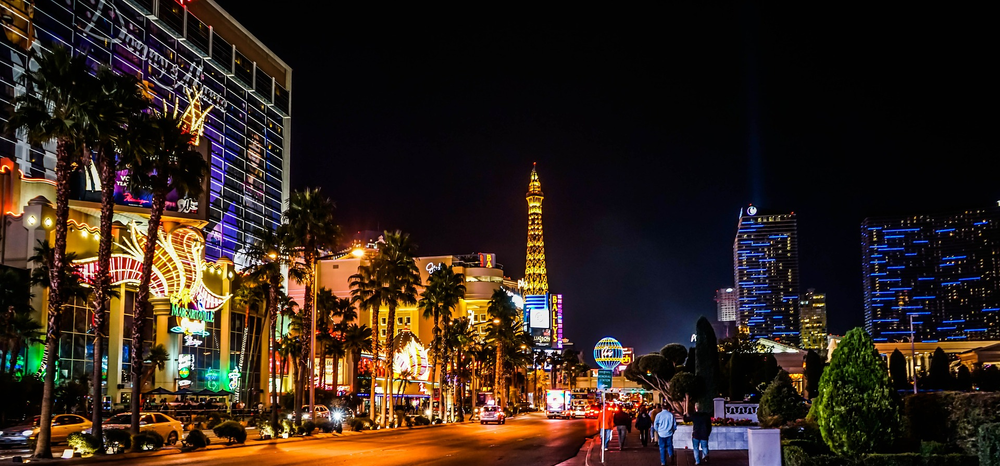Death Valley National Park is one of the most famous national parks in the world but, beyond its reputation, most people actually know very little about it. In our Death Valley National Park guide, we intend to change all that.
We will give you all of the vital information on the park, as well as tips on things like when to go, what to see, where to stay, and how long to visit for. This should help you to lay out the perfect travel itinerary to this iconic destination.
So, if you plan to visit Death Valley National Park and want to make sure your trip is perfect from start to finish, I highly recommend reading on.
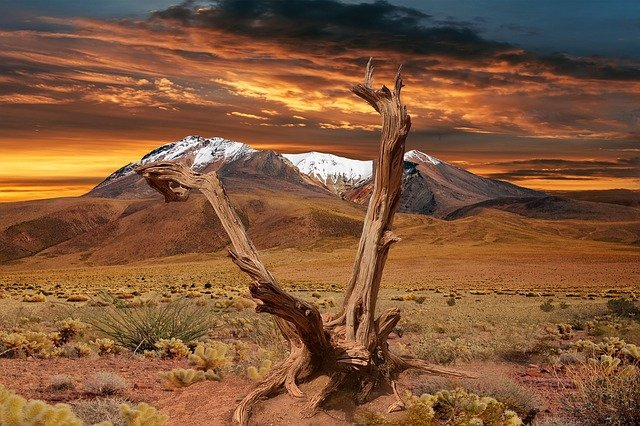
Facts & Figures About Death Valley National Park
Covering 3.4 million acres, Death Valley National Park is the 5th largest national park in the United States and largest outside of Alaska.
Located on the border between California and Nevada, it is also one of only 3 national parks in the country to be set in more than one state, along with Great Smoky Mountains and Yellowstone national parks.
With just under 1.15 million annual visitors, Death Valley National Park is the 23rd most visited national park in the country. Meanwhile, being founded on the 31st of October 1994 makes it the joint 53rd oldest, along with nearby Joshua Tree National Park .
The area was designated the Death Valley National Monument in 1933. However, the Death Valley and Joshua Tree national parks and Mojave National Preserve were all created on the same day by former United States President Bill Clinton as part of the California Desert Protection Act Of 1994.
Death Valley’s main claim to fame is its climate. Not only is it recognised as the driest location in North America, but it also experienced the hottest temperature ever recorded anywhere on Earth, 134.1°F (56.7°C), which occurred on the 10th of July 1913.
It also has the 2nd lowest point in the Western Hemisphere, Badwater Basin, which is 282 feet (86 metres) below sea level.
Included in the Mojave And Colorado Deserts Biosphere Reserve when it was created by UNESCO in 1984, Death Valley was also designated a Dark Sky Park in 2013 by the International Dark-Sky Association.
Death Valley National Park Temperature
The Death Valley National Park temperature usually ranges between a low of 41.1°F (5.1°C) and a high of 117.4°F (47.4°C). The highest temperature ever recorded in the park is 134.1°F (56.7°C) and the lowest is 15°F (-9°C).
The highest temperatures in the park occur between the start of May and the end of September, while the coldest stretch is from mid-November to the end of February. The park is dry virtually year round, with it receiving just 2.2 inches (56 mm) of rain per year.
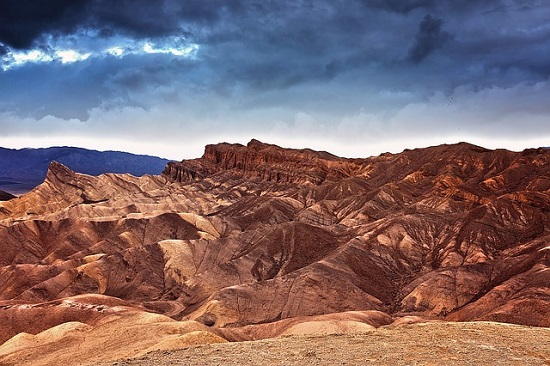
The Wildlife & Landscape Of Death Valley National Park
The landscape of Death Valley National Park is dominated by deserts and wilderness areas, but also has badlands, canyons, creeks, mountain ranges, rock formations, sand dunes, salt flats, and springs, as well as many historic mines.
On rare occasions, Badwater Basin can even become a shallow lake. Despite its arid conditions, there are also over 1,000 plant species that grow in Death Valley.
Most of these are desert bushes like blackbrush, creosote bush, desert holly, mesquite, sage, and shadscale. You will see trees like bristlecone pines, Joshua trees, limber pines, and pinyon junipers too though.
While wildlife in Death Valley isn’t as abundant as in some other national parks, it is still home to more than 50 species of mammals, over 300 types of bird, and nearly 40 species of reptiles, as well as 3 types of amphibians, 2 types of fish, and a variety of insects.
The wildlife you are most likely to see includes bighorn sheep, bobcats, cougars, coyotes, desert tortoise, kit foxes, mule deer, and the Death Valley pupfish.
How To Get To Death Valley National Park
The closest airport to Death Valley National Park is Harry Reid International Airport in Las Vegas, Nevada, which is 110 miles (175 kilometres) away and takes 2 hours to reach by car.
You also have Los Angeles International Airport (LAX) 220 miles (355 kilometres) away, which takes 3 and ½ hours to drive to.
Best Time To Visit Death Valley National Park
The best time to visit Death Valley National Park is from mid-March to early June. This period is still pleasantly warm around the clock, but avoids the extreme highs seen in the peak of summer and the height of California wildfire season in late summer and early fall.
This makes it the ideal time to visit for maximum enjoyment of the park, without having to worry about the weather. It will also help you to avoid the largest groups of tourists, which tend to arrive from the 4th of July to the end of summer.
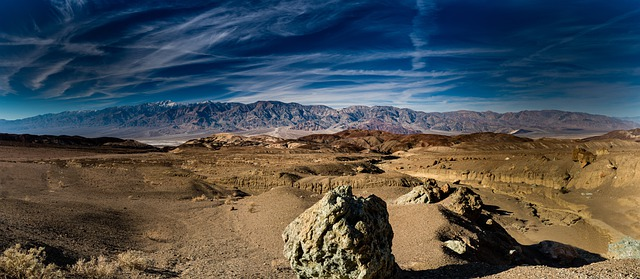
Top Attractions In Death Valley National Park
So, now you know a little bit more about your destination, it is time to take a closer look at the top attractions in Death Valley National Park itself. This will ensure you can plan out your travel itinerary and avoid missing out on any of the highlights during your visit.
Study The Architecture Of Scotty’s Castle
Built in the 1920’s, Scotty’s Castle is a two storey villa designed using Spanish Colonial Revival and Mission Revival architectural styles. Named after local gold prospector Walter Scott, he never owned it, nor is it a castle, making its name somewhat strange.
One of the most stunning structures in Death Valley National Park, Scotty’s Castle has been listed on the United States National Register Of Historic Places since the 20th of July 1978 and is visited by an estimated 100,000 tourists each year.
Tours of the grounds will let you marvel at its architecture, while internal tours conducted by guides wearing period costumes will allow you to see the rooms still decorated with their traditional furniture. There are even tours of the tunnels beneath the property available as well.
Unfortunately, Scotty’s Castle was damaged by severe flooding in 2015, which required all internal tours to be cancelled while restoration work was completed.
The National Park Service estimates that internal tours will begin again in 2022, so make sure to check ahead before you plan your visit.
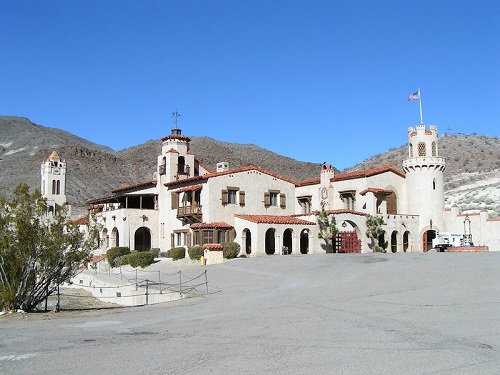
Learn About Death Valley At The Furnace Creek Visitor Center
While visitor centres are often northing more than a way to get introduced to the park you are about to explore, in Death Valley the Furnace Creek Visitor Center is one of its top attractions as well.
Twice each hour there is a slide show that offers a visual guide to visitors on all the wonders they may be about to encounter. Then you have exhibits detailing the climate, geology, wildlife, and human, natural, and pioneer histories of Death Valley National Park.
From November to April, park rangers hold presentations, talks, tours, and walks, going into even greater detail on the culture and history of the region. Meanwhile, the Death Valley Natural History Association runs a bookstore with publications covering every aspect of the park.
Throw in things like a souvenir store, snack bar, and well maintained facilities, and the Furnace Creek Visitor Center is undoubtedly one of the top attractions in Death Valley National Park.
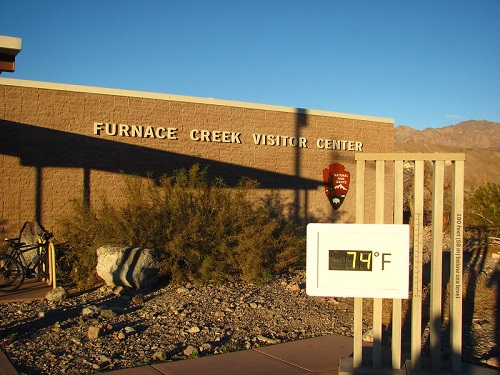
Visit The Saline Valley Hot Springs
Located in the northwest corner of Death Valley National Park, the Saline Valley Hot Springs are a collection of three springs, Palm Spring, Lower Warm Springs, and Upper Warm Springs, which vary in temperature from 102°F to 112°F (39°C to 44°C).
Around each spring, locals have created soaking pools made from concrete, rock, and tile, as well as facilities like showers, washing stations, and campsites.
The pools all vary in size, temperature, and design. Many are unnamed, but some are more famous, like Volcano Pool and Wizard Pool.
With the warming waters and remote location keeping the bulk of the tourists away, the Saline Valley Hot Springs are one of the best places in Death Valley National Park to sit back, relax, and enjoy the fabulous weather and breathtaking surroundings of the region.
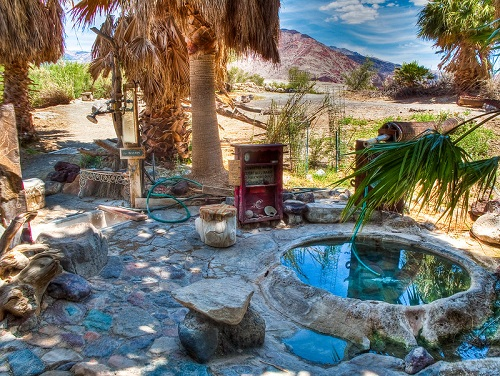
Witness The Depth Of Badwater Basin
Located in roughly the center of the park, the Badwater Basin salt flat is the lowest point in the United States, 2nd lowest in the western hemisphere, and 11th lowest point on Earth, with a minimum elevation of 282 feet (86 metres) below sea level.
Due to the hazardous nature of the salt flat, with just a thin crust covering a thick, prehistoric mud, there is very little exploring that can be done here.
However, with a marker signifying the lowest point and a pool fed by a small creek that is home to some unique wildlife, such as the endemic Badwater snail, it is still more than worth the journey.
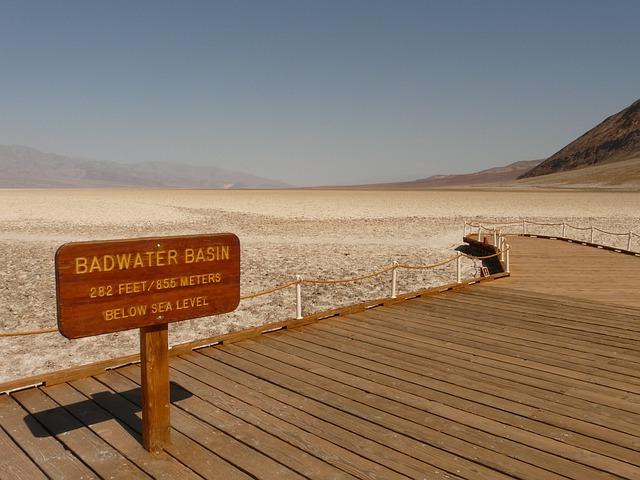
Spend A Night Stargazing
The International Dark-Sky Association designated Death Valley National Park a Dark Sky Park in 2013. This is due to it boasting some of the darkest skies in the nation, thanks to its wild, isolated location. As a result, it has become an extremely popular location for stargazing.
If you head to the most remote section of Death Valley, in the park’s northwest corner near the Ubehebe Crater, you will find some of the darkest skies in the world, listed as “excellent” or Class 1 on the Bortle Scale.
From here you can lay back and study the Andromeda, Milky Way, and Triangulum galaxies, as well as a range of optical light phenomena. It is an absolute dream for any stargazing enthusiasts or those who simply want a relaxing or romantic night out in the wilds.
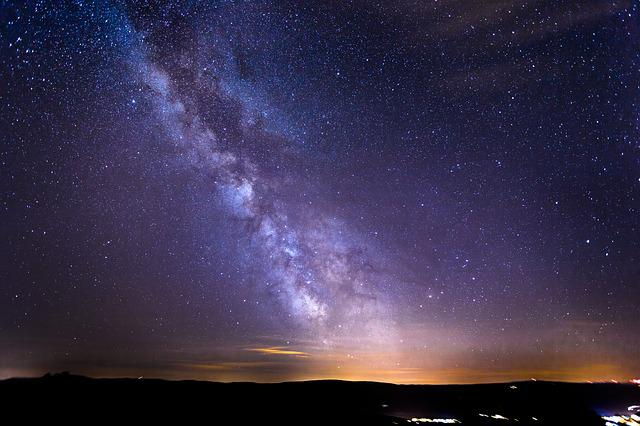
Go Hiking In The Wilderness
While the landscape of Death Valley National Park can be described as barren, one thing it isn’t short of is hiking opportunities, with thousands of different routes running throughout the park.
Many of these will even lead you to iconic Death Valley locations that are unreachable by road.
Viewpoints such as Aguereberry Point, Dante’s View, and Telescope Peak provide some of the best vistas you will find in the park. Then sites like the Charcoal Kilns, Darwin Falls, Devil’s Golf Course, and a collection of salt flats, springs, sand dunes, and valleys display the park’s diversity.
Finally, you have stunning formations like Amargosa Chaos, Artist’s Drive And Palette, Mosaic Canyon, Natural Bridge Canyon, Rainbow Canyon, Red Cathedral, Shoreline Butte, Titus Canyon, Ventifact Ridge, and the Ubehebe Crater to complete the otherworldly landscape of the park.
With routes of all lengths and difficulties available, you can explore the stunning scenery of the Death Valley landscape on foot, whether you are after a shorter stroll or a more intense expedition out into the badlands of the park.
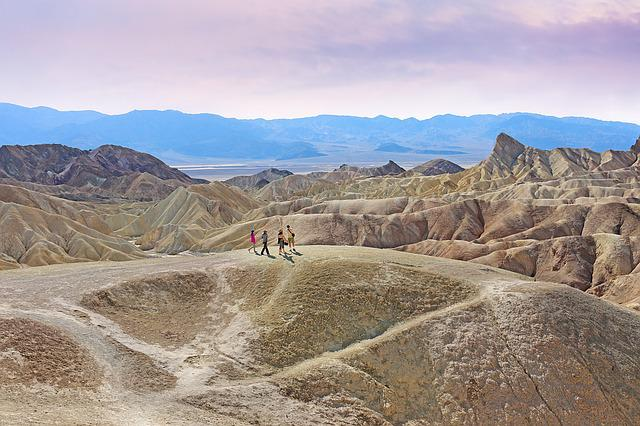
Explore The Park’s Historic Mines
While no one is sure exactly how many mines there are within the boundaries of Death Valley National Park, it is known to be a large number. Estimates suggest there could be anywhere from 2,000 to 18,000 mining structures still located within the park.
While many of the sites can be hazardous, this nonetheless provides an opportunity for adventure for those interested in abandoned locations or historic mining.
With everything from uranium to gold having been mined in Death Valley, you can find a diverse range of sites scattered around.
The last active mine in Death Valley, the Billie Mine, shut in 2005, so this is a great place to start for those wanting to see the most recent example. You also have the Harmony Borax Works, which is listed on the United States National Register Of Historic Places.
The Briggs Mine, Eureka Mine, Keane Wonder Mine, Keystone Mine, and Warm Springs Mine are then among the other most popular mines in the park.
With countless other opportunities laying around, you will never be short of historic sites in Death Valley. Just be careful when exploring and watch out for dangerous equipment or shafts obscured from view.
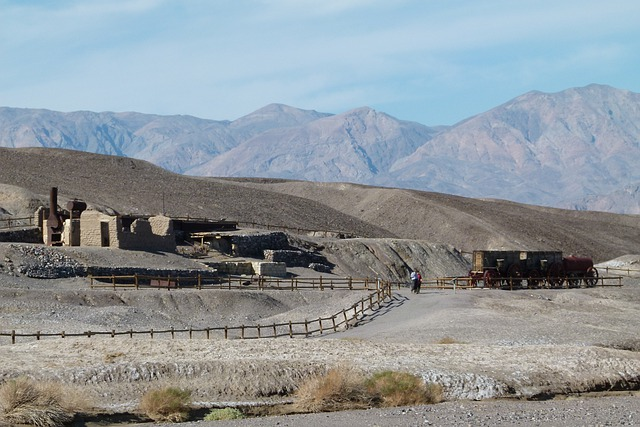
Uncover The Morbid History Of Barker Ranch
Barker Ranch is a small building built in the Panamint Range in the 1940s in one of the lushest areas in Death Valley National Park. Purchased by the Barker family in 1955, it was to be used for gold and uranium mining for the next 15 years.
However, its most infamous history started in 1968, when it became the primary base of operations for Charles Manson and his followers, known as the Manson Family.
They resided here for over a year, until local sheriffs, park rangers, and highway patrolmen stormed the property to apprehend vandals, not realising the historic events they were setting in motion.
While the property itself now sits in ruins, it is a must visit location for anyone interested in either Charles Manson or serial killers, with visitors reporting a morbid feeling hanging in the air to this day.
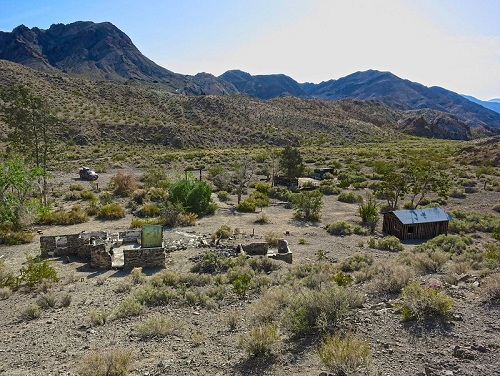
Things To See And Do Near Death Valley National Park
Death Valley National Park is undoubtedly filled with exciting sights, sounds, and attractions, but that doesn’t mean there isn’t plenty more on offer to enjoy in the surrounding area as well.
With that in mind, we will now look at the best things to see and do near Death Valley National Park, to help you fill out the most comprehensive travel itinerary possible.
Las Vegas
The most populous city in Nevada, 25th most populous in the United States, and the heart of one of the country’s largest metropolitan areas, Las Vegas is a destination known worldwide for its legendary entertainment and hospitality industries.
With luxury themed casinos, bars, restaurants, shows, and countless other entertainment options on offer, “Sin City” is a fabulous place and one that is perfect for people to kick back and relax in after an expedition exploring the Death Valley National Park wilderness.
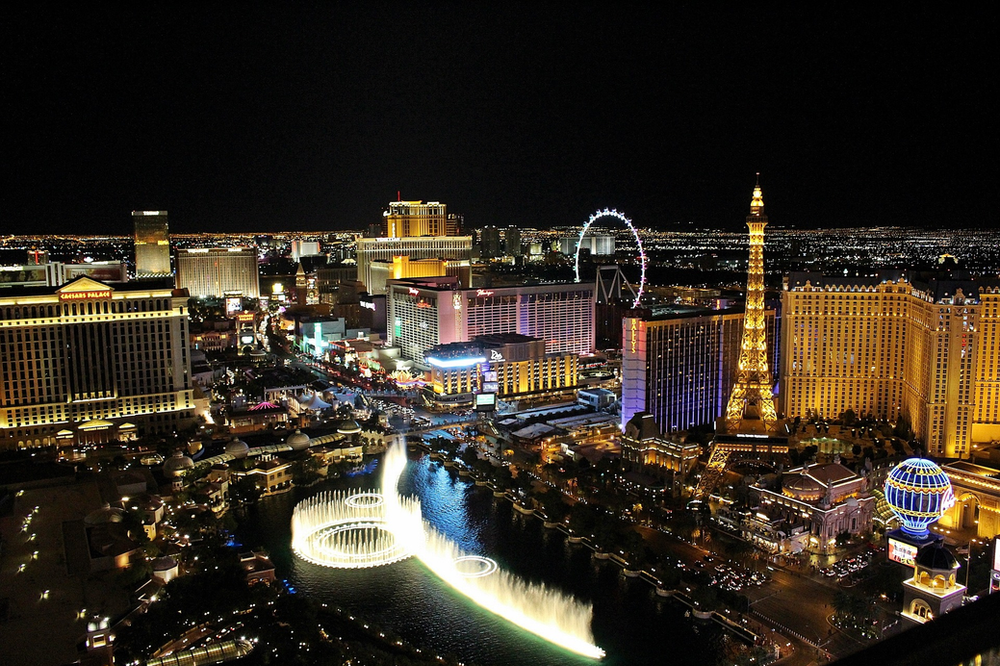
Beatty
Known as the gateway to Death Valley, Beatty sits just 5 miles (8 kilometres) from the park and is filled with exciting, historic attractions.
From the Rhyolite ghost town and Goldwell Open Air Museum to the Nevada Test Site for nuclear weapons and an outdoor sculpture park, Beatty has something for everyone.
There are even options like Yucca Mountain and Bailey’s Hot Springs and Bathhouses, for those who just want to enjoy the scenery and relax. Throw in a great range of amenities and Beatty is a neat way to escape from the wilderness of Death Valley, without having to go too far.
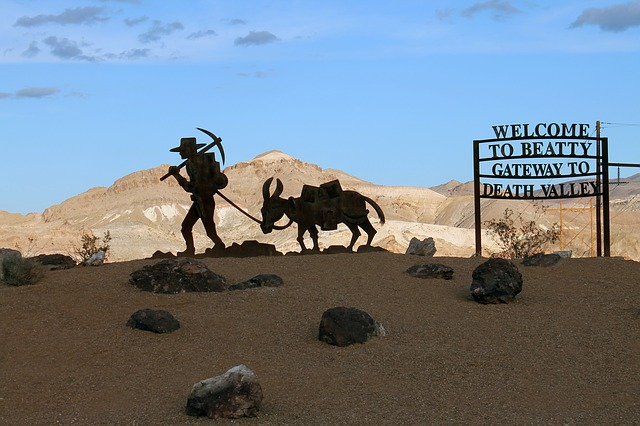
Inyo National Forest
Covering just under 2 million acres, Inyo National Forest is the 27th largest national forest in the United States. Stradling the border between the states of California and Nevada, Inyo National Forest was created in 1907 as part of the Los Angeles Aqueduct project.
While Inyo National Forest is one of the least wooded national forests in the system, its beautiful lakes, rivers, and vegetation, as well as the wildlife that inhabit them, make it a nice change of pace from the arid landscape of Death Valley National Park.
Inyo National Forest also boasts a number of incredible, unique attractions. These include Boundary Peak, the tallest mountain in Nevada, Ancient Bristlecone Pine Forest, home to the oldest known tree on Earth, and the iconic Mount Whitney.
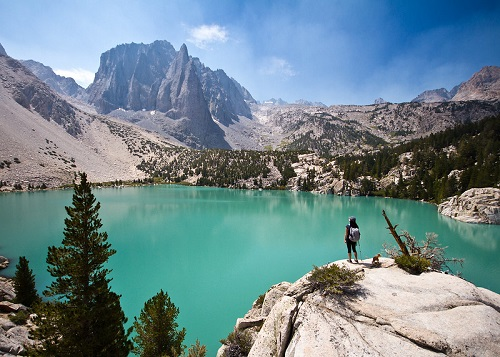
Mount Whitney
With its peak 14,505 feet (4,421 metres) above sea level, Mount Whitney is the tallest mountain in the contiguous United States.
Located on the eastern edge of Sequoia National Park and western edge of Inyo National Forest, it is an extremely popular yet challenging destination for both climbers and hikers. While it can be reached from either side, the eastern side we are on is undoubtedly easier to hike to.
Whether you plan to hike the trail to the top or climb the rocks, it is a taxing adventure but one that is more than worth the effort. Those who make it to the top will get to experience some of the most stunning views of the states of California and Nevada you will find anywhere.
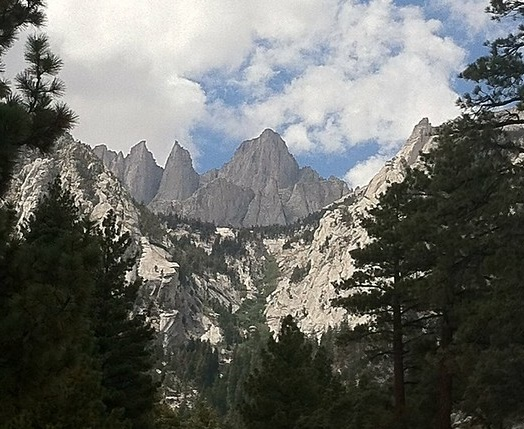
Best Place To Stay Near Death Valley National Park – The Ranch At Death Valley
The Ranch At Death Valley is the park’s most iconic hotel. Located in the centre of the park in the famed Furnace Creek region, it boasts the perfect combination of status, facilities, and location to make it the dream place to stay when you visit Death Valley National Park.
The rooms at this 4-star establishment are all air conditioned, spacious, and have their own private bathroom and array of luxury amenities. Then, in the communal areas, you will find facilities like an outdoor swimming pool, bar, restaurant, terrace, garden, kid’s play area, and tennis court.
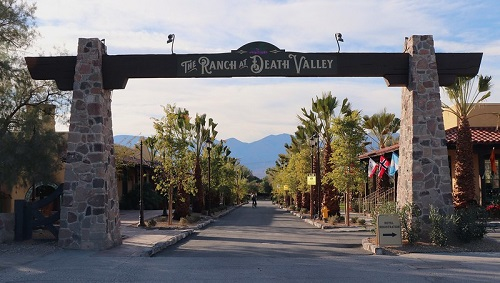
How Many Days To Spend In Death Valley National Park
For most people, 2 full days is the perfect amount of time to spend in Death Valley National Park.
This will give you plenty of time to drive to all of the most popular attractions, go on some amazing hikes, relax in the hot springs, and get to experience the beauty of the night sky in Death Valley.
Those who only have a single day to spend will still be able to have an enjoyable trip and see most of the top attractions, they will just need to stick to shorter hikes and sessions in the hot springs.
On the flip side, given its vast size and number of trails, those who love hiking in the hot weather will be able to spend significantly longer than 2 days if they wish.
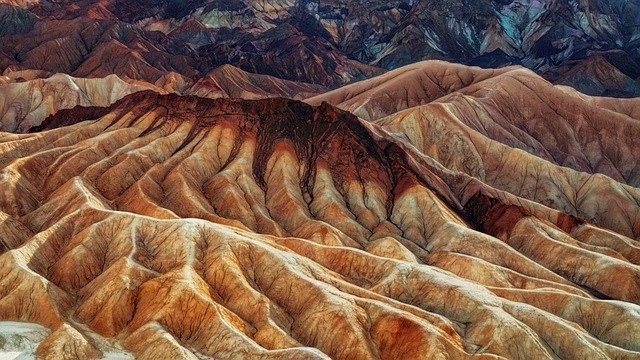
Conclusion
Death Valley National Park is a unique destination with a landscape that is truly out of this world. From natural wonders to historic buildings and structures, it is a destination that allows you to immerse yourself in the beauty, culture, and history of the region.
Our Death Valley National Park guide will hopefully have given you everything you need to design the perfect travel itinerary for when you visit yourself. From the duration and timing of your trip to the attractions and accommodation, you will now be able to plan your dream vacation.
All you have left to do now then is start getting everything booked. That way, you won’t have to worry about missing out on your preferred trips or hotel and can look forward to experiencing it all for yourself, as soon as possible.


